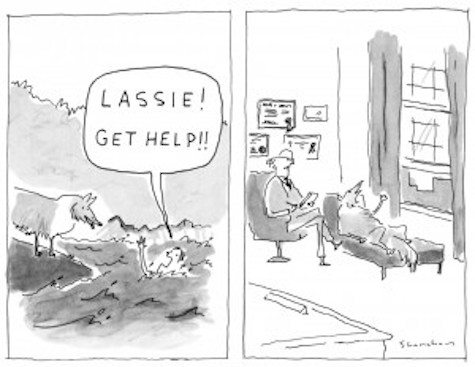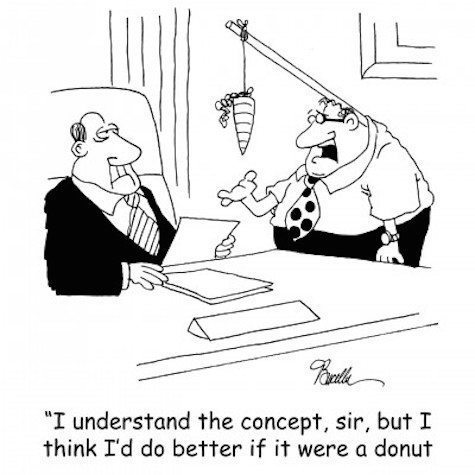Sharpen Your Communication Skills – 6 Tips from the Marketing Department
By Anne Boyle | March 4, 2015
“The single biggest problem in communication is the illusion that it has taken place.”
A bit blunt, perhaps, but George Bernard Shaw makes a good point – communication means getting through to the audience and all too often, we send out messages that don’t really connect with anyone.
As a marketer, it’s my job to help clients create messages that connect with their audiences. To create those messages, I often have to help clients step back from their tactical ambitions so we can develop solid marketing strategies. It recently occurred to me that the process I use in developing marketing strategies could really help anyone cultivate better communication skills.
If you’re often left wondering why no one responds to your emails or acts on your requests, you need some help from the marketing department! Here are 6 tips you can use to create better communications.
1. Get over yourself
If you do nothing else, think about your audience – I mean really consider them at every point in the communications process. It will make a huge difference.
Please remember that you are NOT your audience. Your audience is made up of individuals who differ from you and have their own distinct needs, wants, experiences, feelings and attitudes. While you may know a topic inside and out or think that what you’re communicating is top priority, others operate with a different understanding.
Before you craft a message, identify who you want to reach and think about what they’re like, what matters to them and how they may perceive your communication. This knowledge should serve as a guiding light for all of your messages. When you finally do get to communicating, highlight your most important points so your audience doesn’t have to spend time trying to decipher a message that isn’t their top priority.
Sign Up for Pegable Post to get ideas, advice and resources on activating your Purpose sent right to your inbox.
2. Know what you want to happen
 What do you want to happen as a result of your communication? If YOU aren’t sure why you’re communicating, you can’t expect anyone to know how to respond.
What do you want to happen as a result of your communication? If YOU aren’t sure why you’re communicating, you can’t expect anyone to know how to respond.
While there are certainly instances when we’re sharing information for reference at a future time, most of the time we communicate because we want people to do something – take some action or avoid doing something.
Of course, it isn’t easy to get people to do – or not do – something. People are complex. Each person processes information differently and our unique frames of reference impact how we receive information, so it is very important be exceptionally clear about what you want to make happen.
3. Offer something in return
 Unfortunately, a clear ask isn’t enough. People act based on what’s important to them, so you have to consider your audience’s perspective and entice cooperation by offering a reward. By reward I don’t mean giving out gift cards or fair trade chocolate — I mean conveying how your audience will benefit from doing what you ask.
Unfortunately, a clear ask isn’t enough. People act based on what’s important to them, so you have to consider your audience’s perspective and entice cooperation by offering a reward. By reward I don’t mean giving out gift cards or fair trade chocolate — I mean conveying how your audience will benefit from doing what you ask.
The best way to figure out the reward? Simply ask yourself, “What’s in it for them?” Since benefits are subjective and personal, make sure the benefit you offer is meaningful to your audience regardless of whether it has anything to do with your ultimate goal.
To anticipate your audience’s needs and overcome potential roadblocks or objections, find answers to questions like:
- What is your audience doing instead of what you want them to do?
- What do they gain from the status quo?
- What happens if they don’t do what you ask?
4. Consider the messenger
For your own communications, that means considering yourself. How your audience perceives you has a big impact on how likely they are to pay attention and, ultimately, to act. Consider:
- What does your audience think of you?
- Do they know you at all? If not, why should they listen to what you have to say or read what you’re sending?
- If they know you, are you generally trustworthy, helpful and cooperative or dodgy, disagreeable and disobliging?
Take a moment to reflect on these questions, then think about how you can leverage your positive image or overcome your bad rep. When you communicate, use a tone appropriate given your image and your audience’s preferences and state of mind.
5. Use the right channel
The unfortunate truth is that we often don’t consider which tools we should use to communicate. It’s crucial to think about what tools can help us reach our audience when they are ready for our message, looking for the benefits we offer and in a position to act.
For example, while shooting off an email may be easiest, if you need a timely response, picking up the phone or walking down the hall may work better.
Likewise, not every communication requires an in-person meeting. Respect the time of others by considering when other tools – from an online chat to a quick survey – may be an easier way for them to make what you hope will happen actually happen.
Also remember that engaging with your audience multiple times in different ways is often needed to get through the clutter of communications. It might be inconvenient for you, but if you really want to see something happen, it’s part of the process to try, try again.
6. How did it work?
After an exchange gauge your success by asking yourself these questions:
- When you consider your reason for communicating, were you successful?
- Did people respond as you expected or were there surprises? What can you learn from these?
- Was one method of communicating more successful than another? Why do you think so?
- If you’re communicating to a group, did certain people engage differently than others? Was there anything in particular that resonated more or less?
Finally, don’t be afraid to ask for feedback from your audience. If you don’t track responses and reactions, you’ll have no way of knowing which communications are on the right track and which are stalled at the station. It’s helpful to think of your communications as permanent works in progress so you can kick complacency to the curb.
I hope this high-level list has your wheels turning about how you can communicate better. Do you think there’s something I left out? Do you have other tips for those who want to be more effective communicators in the workplace or at home? Share your thoughts in the comments below.




Anne, I think this is a great succinct list of the “how” of communicating. It would be cool to see you explore a bit more of the “where.” Does email or eNewsletter marketing still work? Is social media right for every type of communication? Is there still any place for direct mail? Would love to hear your thoughts on those kinds of issues in the future.
Thanks, Gary! I appreciate the feedback and knowing what you’re interested in reading here. We’ll be getting into the “how” and much more in future posts. Stay tuned!
Anne